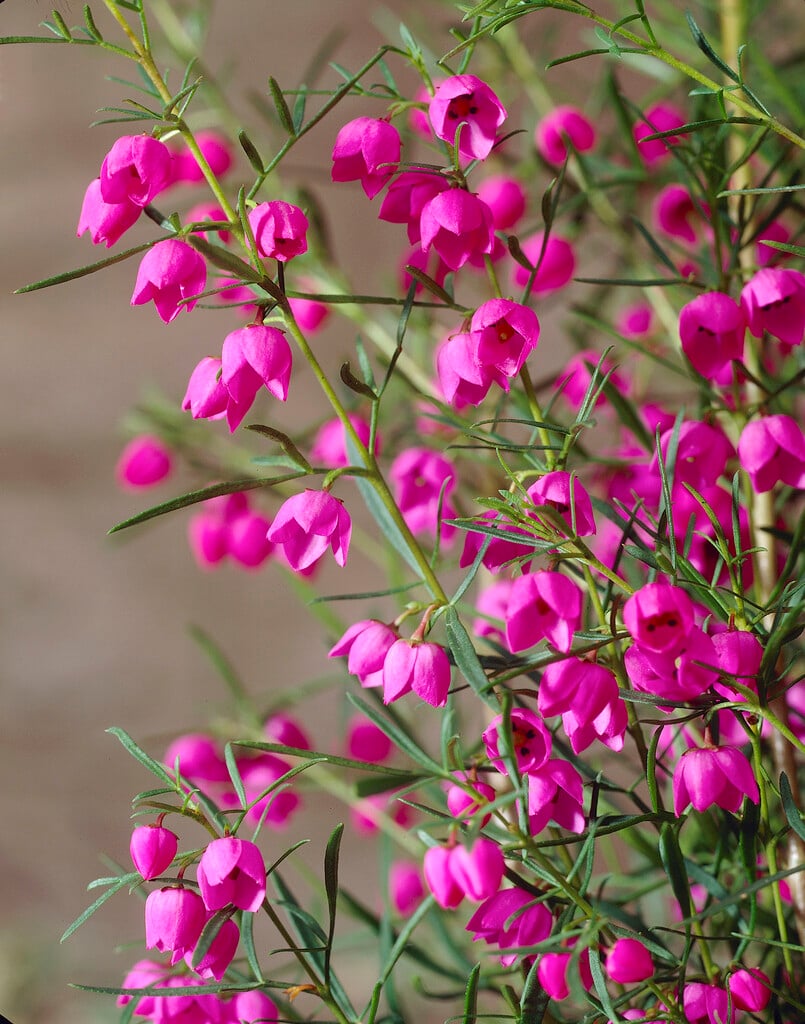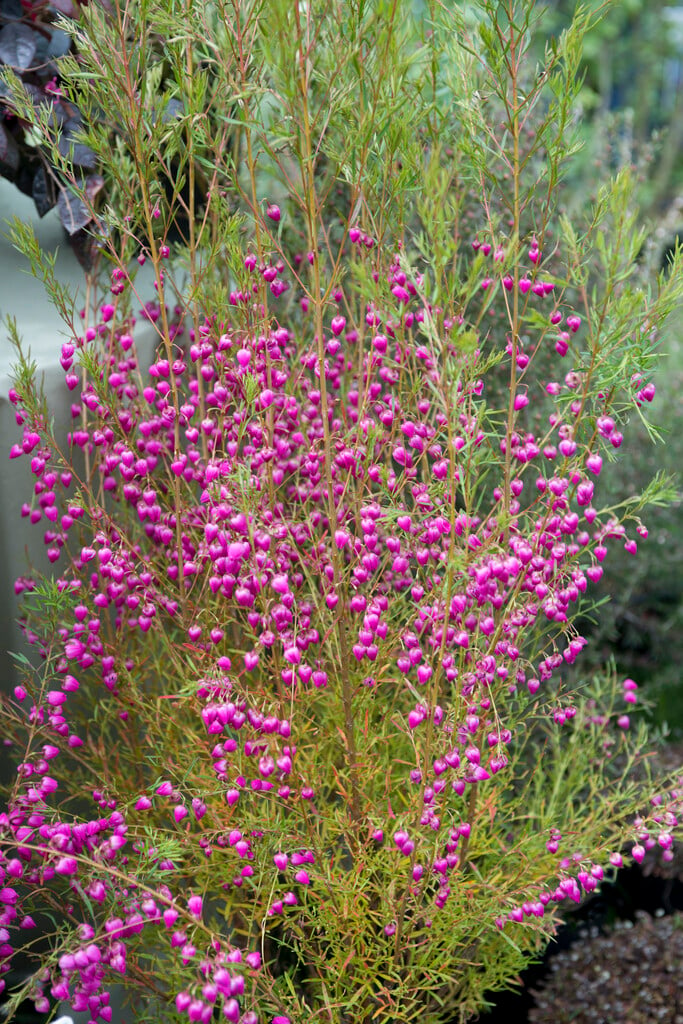Boronia heterophylla
red boronia
A tender, upright, bushy, evergreen shrub with narrow, needle-like, aromatic, mid-green leaves. In spring to early summer it bears clusters of pendent, bell-shaped, dark pink flowers along the branches.
Size
Ultimate height
1–1.5 metresTime to ultimate height
5–10 yearsUltimate spread
1–1.5 metresGrowing conditions
Moisture
Moist but well–drained, Well–drainedpH
Acid, NeutralColour & scent
| Stem | Flower | Foliage | Fruit | |
| Spring | Pink | Green | ||
|---|---|---|---|---|
| Summer | Pink Green | |||
| Autumn | Green | |||
| Winter | Green |
Position
- Full sun
- Partial shade
Aspect
East–facing or South–facing or West–facing
Exposure
Sheltered Hardiness
H3Botanical details
- Family
- Rutaceae
- Native to GB / Ireland
- No
- Foliage
- Evergreen
- Habit
- Spreading branched, Bushy
- Genus
Boronia are shrubs with evergreen, often aromatic, foliage and cup- or bell-shaped flowers borne singly or in clusters
- Name status
Correct
- Plant range
- SW Australia
How to grow
Cultivation
Under glass grow in lime-free (ericaceous) potting compoost in full light with shade from hot sun. Provide good ventilation. When in growth, water moderately, applying a phosphate-free liquid fertiliser once a month; water sparingly in winter. Outdoors, cultivate in moist but well-drained, ideally sandy, neutral to acid soil in full sun, provide the plants with a cool root run.
Propagation
Sow seed at 16°C (61°F) in spring. Propagate by semi-ripe cuttings in a propagating case with bottom heat in summer.
Suggested planting locations and garden types
- City and courtyard gardens
- Conservatory and greenhouse
- Wall side borders
Pruning
Pests
May be susceptible to glasshouse red spider mite.
Diseases
Generally disease-free.
Love gardening
Sign up to receive regular gardening tips, inspiration, offers and more
View our Privacy Policy
Get involved
The Royal Horticultural Society is the UK’s leading gardening charity. We aim to enrich everyone’s life through plants, and make the UK a greener and more beautiful place.

